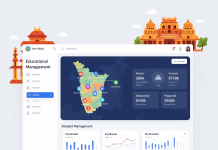Are you interested in studying abroad? Do you want to improve your English? Australia may be the destination for you. The land of kangaroos welcomes more than 600,000 international students attracted by the living environment but also by renowned universities and quality education. Certainly, before studying in Australia, it is necessary to know some important things about the study.
QUALITY EDUCATION
Australia is the third most popular destination for international students. In addition to the possibility of perfecting their English, students choose this southern hemisphere country most often for its beneficial living environment. Australia has some of the most liveable, multicultural and modern metropolises in the world, as well as wide open spaces, breathtaking landscapes and iconic animals.
The quality of teaching is also renowned there. In this country with Anglo-Saxon influence, teachers are attentive, available, and emphasize interaction in the classroom. As a result, you will grow up from this experience, with more self-confidence, ease of expressing yourself in public and a developed critical mind, so many benefits for your future professional life. Australian universities also enjoy a very good reputation around the world, with six of them in the top 100. If you want to know more about the universities in Australia, you can use School Finder to easily do a school search.
A VERY SELECTIVE UNIVERSITY SYSTEM
In Australia, the university falls into the “higher education” category, that is to say higher education, and trains almost all types of profession: teaching, business, communication, design, engineering, IT, law, medicine …
The country has 41 universities, delivering the same type of degree. All are publicly funded except for three. If you choose Bond University on the Gold Coast, for example, know that it is one of the only private universities in Australia. If you swear by the best, find out about the “Group of Eight” or Go8. These are the best universities in Australia, scattered in several cities of the territory. These establishments are ranked in the top world and excel in research. Together, they contribute 70% of university research in Australia, proving their national importance in the economic, social or environmental fields.
All recruitments in universities are made by application (and not by competitive examination), regardless of the level of studies. However, the Australian university system, which aims to train critical and independent minds, is known to be more selective than the others. A good file is therefore required for registration. This demanding process takes into account several criteria, including academic success – obtaining a mention, even fairly well, is a good thing – and the level of English.
TWO LEARNING CYCLES AT UNIVERSITY
The Australian university system is modeled on that of the Americans and it has 2 learning cycles.
In Australia, the first cycle of apprenticeship, or undergraduate studies, leads to a bachelor’s degree.People who obtain good results at the end of these three years of study can proceed to an honors degree, obtained in two semesters. If you choose this option, you will then have to submit a thesis following a long research project. After a bachelor’s degree, students also have the opportunity to pursue a specialization to gain new knowledge or deepen their skills in a professional field, the objective being for them to bring together the best conditions to start working life. Thus, they may be required to study for an additional semester to obtain a graduate certificate, or an additional year for a graduate diploma or a postgraduate diploma.
The second learning cycle, or postgraduate studies, leads to a master’s degree. Overall, it takes a year and a half or two years, it varies depending on the establishment. Doctoral studies, or doctoral studies, lead to a doctor of philosophy (PhD) or a professional doctorate.
In Australia, it is possible to follow a double diploma, the advantage of which is to combine qualifications in two different fields and thus to be more competitive on the market. employment. This practice is quite common and dual degrees are offered in the majority of Australian institutions.
Finally, TAFE (technical and further education) institutions are ideal if you are planning to pursue professional studies. Publicly funded, these establishments are scattered throughout Australia. They train and prepare students for the world of work in a specific sector, for example tourism, catering, design or IT.
A BUDGET
If you are thinking about going to study in Australia, the cost of tuition is a major consideration. Like Anglo-Saxon countries, universities are chargeable and are not accessible to all scholarships. Around the world, going to Australia to study is even proving to be the most unaffordable option. To enter a Group of Eight university, for example, you will have to shell out at least AU $ 20,000 each year, up to over AU $ 60,000 for medical and surgical studies. The rest of Australian universities align with these rates, starting at AU $ 10,000 per year and up to AU $ 50,000 in more extreme cases. TAFE institutions offer less extravagant prices, although not accessible to everyone.
In a word, it is a good choice to study in Australia but the high cost will be a big problem for most people. So before making the decision, you have to start from your own reality.






